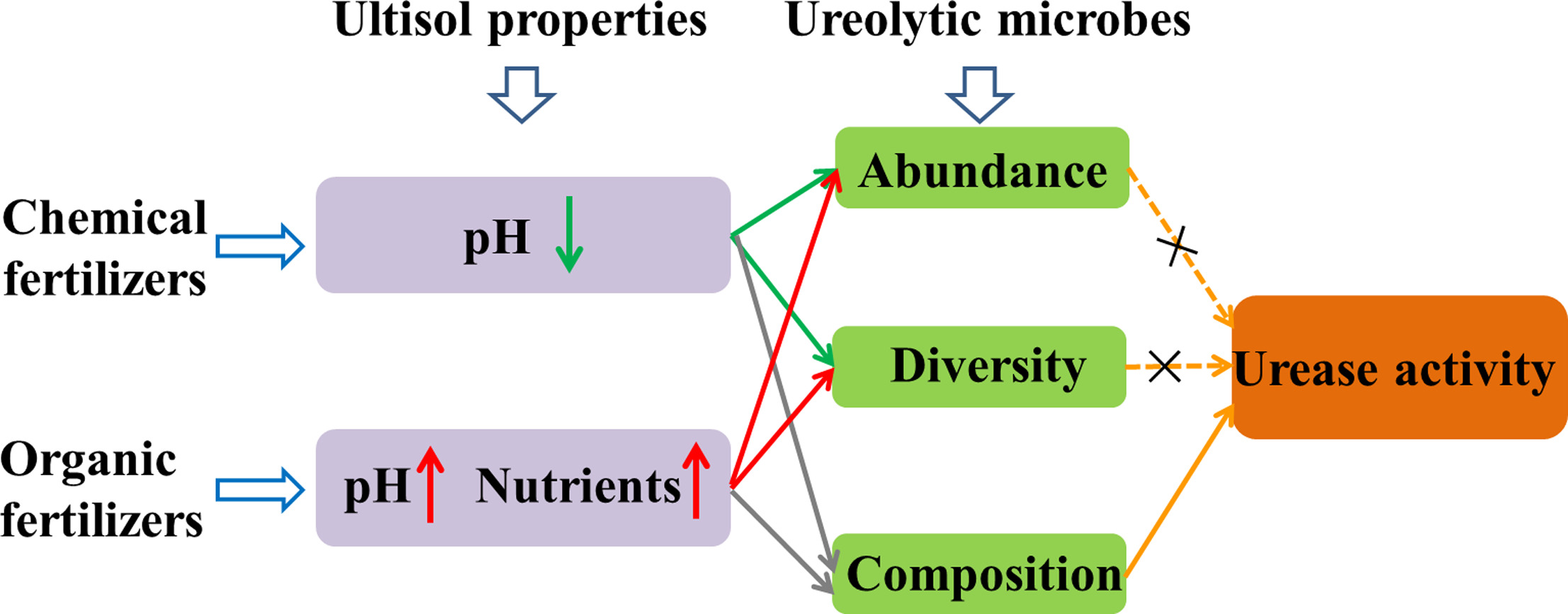Highlights
- Chemical fertilizer reduces ureolytic microbial richness and activity.
- Manure application improves ureolytic microbial abundance and activity.
- Long-term fertilizations change the structure of ureolytic microbiota.
- The ureolytic microbiota among soil aggregates has no significant difference.
- Soil urease activity is determined by soil pH and ureolyitc microflora composition.
Abstract
Ureolytic microorganisms play a crucial role in soil nitrogen transformation. Soil aggregates and associated microbes are reported to modify the impact of agricultural management on soil nutrient cycling. However, the responses of ureolytic microbial communities in various soil aggregates to long-term fertilization regimes are still unclear in acid soils. In this study, we characterized the ureolytic microflora as well as urease activity in three soil aggregate fractions (2–0.25, 0.25–0.053, <0.053 mm) from an Ultisol with 26-year fertilization experiment. The results showed that long-term chemical fertilization (NPK) significantly decreased the abundance, richness and activity of ureolytic microbial community across soil aggregates (P < .05) due to strong soil acidification. While manure application (M and MNPK) could mitigate these negative impacts and markedly (P < .05) improved the abundance, α-diversity and activity of soil ureolytic microflora. Long-term fertilization regimes also drove the differentiation of ureolytic microbial compositions in soil aggregates (Adonis, F = 17.4, P = .001, R2 = 33.6%), and manure application appeared to be the most important driver. This variation partly contributed to the aberrance of soil urease activity (structure equation model, path coefficient: 0.45, P = .008). No significant differences were found for ureolytic microbial community among soil aggregates, which was in accordance with the distribution patterns of soil nutrients, indicating the dominant role of resources availability in determining ureolytic microbiota in micro-environment. The ureolytic microbial community among different soil aggregates responded uniformly to long-term fertilizations. Our study revealed that manure application was a sustainable fertilization regime to alleviate the loss of soil ureolytic microbial diversity and activity in acid soils.
